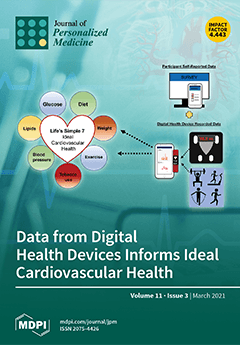Background: We have investigated the distribution of the Th1, Th2 and Th17 subsets in circulating CD4
+ T lymphocytes and their naïve (T
N), effector (T
E), central (T
CM) and effector memory (T
EM) activation/differentiation stages in patients
[...] Read more.
Background: We have investigated the distribution of the Th1, Th2 and Th17 subsets in circulating CD4
+ T lymphocytes and their naïve (T
N), effector (T
E), central (T
CM) and effector memory (T
EM) activation/differentiation stages in patients with major depressive disorder (MDD). Methods: Thirty MDD patients and 30 healthy controls were studied. The counts of circulating CD4
+ T lymphocytes and their distribution on the T
N, T
E, T
CM and T
EM activation/differentiation stages were analyzed by polychromatic flow cytometry. The intracytoplasmic interferon gamma (IFNγ), interleukin (IL)-4, IL-17A and tumor necrosis factor alpha (TNF-alpha) and membrane CD28 expression were also measured. The serum IFNγ, IL-4, Il-17A and TNF-alpha were measured by Luminex, respectively. Results: MDD patients had normal counts of CD4
+ T lymphocytes and of their T
N, T
CM and T
EM subsets but increased number and percentage of T
E CD4
+ subset. CD4
+ T lymphocytes had significantly enhanced percentage of cells that express IL-17 and TNF-alpha explained by the expansions found in the T
N, T
CM and, T
EM and T
CM, T
EM and T
E activation/differentiation stages, respectively. A selective increase in the percentages of T
CM and T
EM expressing IFNγ was also observed. We found a significant correlation between the percentages of CD4
+ T lymphocytes expressing IFNγ and TNF-alpha in these patients. MDD patients showed increased serum levels of IL-17 and TNF-alpha, but normal IFNγ and IL-4 concentration. Limitations: the cross-sectional nature of the study could be considered a limitation. Conclusions: MDD patients have abnormal circulating CD4
+ T lymphocytes with expansion of the IL-17 and TNF-alpha expressing cells as well as increased levels of circulating IL-17 and TNF-alpha.
Full article






